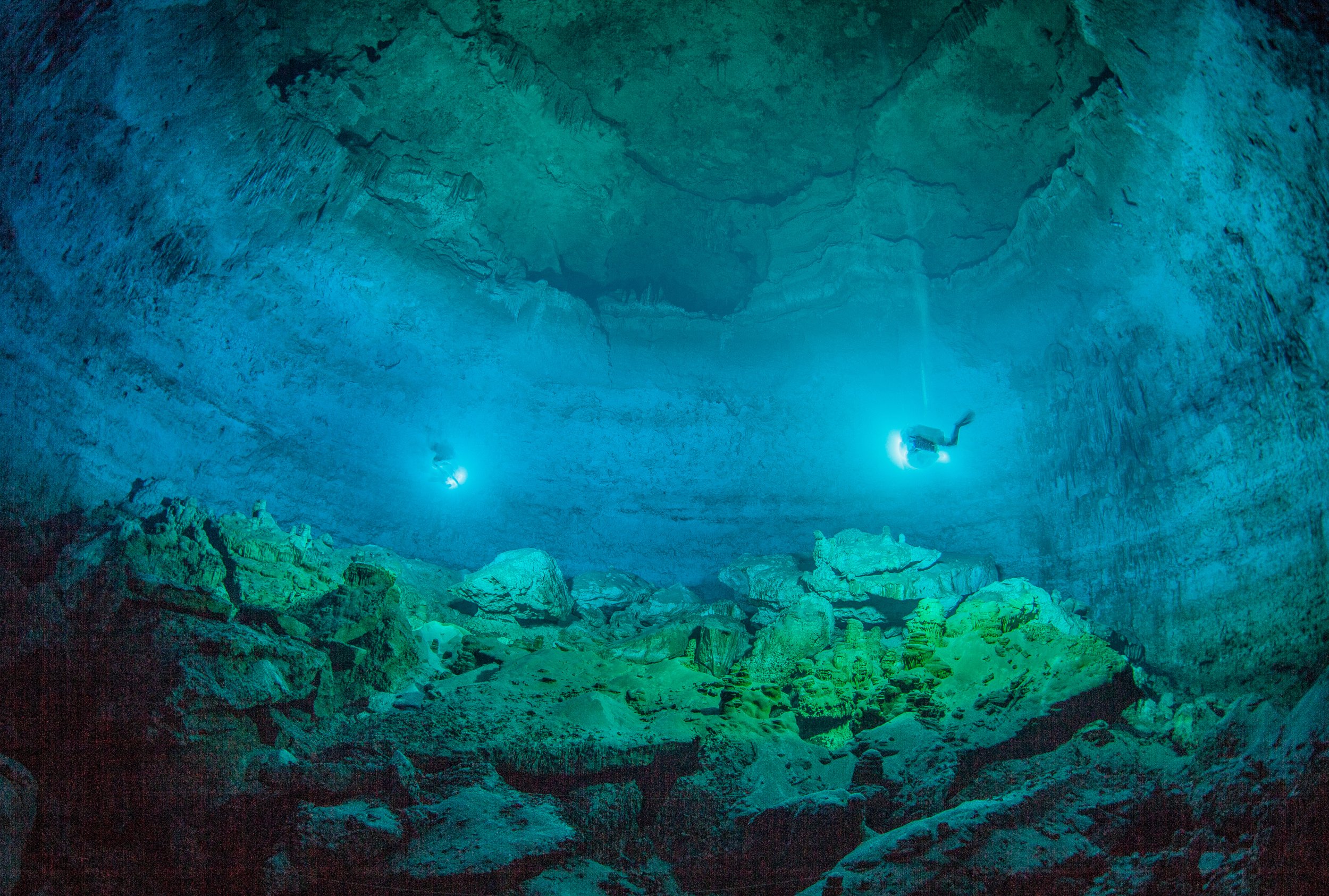
New research on one of the oldest and most complete American skeletons reveals further proof that all Native Americans descended from Siberian migrants who crossed a land bridge to North America thousands of years ago, a team of scientists announced Thursday.
The bones of a teenage girl discovered in an underwater Mexican cave date back to at least 12,000 years ago. The smoking gun is her mitochondrial DNA, which indicate an Asian lineage — that she shares with many modern descendants of native North and South Americans.
"Approximately 11 percent of Native Americans exhibit this genetic lineage," says Deborah Bolnick, a co-author of the paper reporting the findings, which appeared Thursday in the journal Science.
The girl's age fits the currently favored model of American migration from Asia across the Bering Strait, which was once a land bridge. The model suggests a population known as the Clovis people spread throughout the continent around 13,000 years ago.
But in recent years, there has been hot debate about whether the Clovis people really came across the Bering Strait. Some speculate that ancient Europeans or Southeast Asians sailed to South America thousands of years earlier.
A study published this past February in Nature appeared to put that debate to rest. Scientists had sequenced the genome of a 12,600-year-old infant whose damaged bones were discovered by a construction crew in Montana in 1968. Dubbed the Anzick Boy, after the owner of the property where he was found, his genes were one-third Eurasian and two-thirds East Asian—a genetic makeup much like that of modern Native Americans. What's more, he was lying among artifacts that clearly belonged to a group of Clovis people.
Anzick Boy seemed to prove that Clovis people, modern Native Americans and Siberian migrants are all related.
"It truly is the Rosetta Stone of understanding the people of the Americas," that study's lead archaeologist, Michael R. Waters, of Texas A&M University, tells Newsweek.
But there were still mysteries. For one, the Anzick Boy was missing a face.
That mattered because some of the oldest skeletons (belonging to a people sometimes called "paleoamericans") do not look like modern Native Americans. Instead, they appear more like people native to Australia or Africa. Because the Anzick boy had no facial bones, scientists could not use the skeleton to demonstrate a link between paleoamerican features and an Asian bloodline.
Meanwhile, alternate migration theories had gathered momentum after bizarre discoveries in disparate parts of South America.
At Monte Verde, Chile, a human footprint was discovered not far from what appeared to be three hearths dating to about 33,000 years ago — 7,000 years before anyone could have crossed the Bering Strait land bridge into modern Alaska. In November, the 30,000-year-old bones of apparently human-butchered giant sloths showed up in Uruguay. And in March, researchers found possible stone tools in Brazil that date back to about 22,000 years ago.
Could the African or Australian facial differences of paleoamericans be explained by ancient seafaring explorers from those places? Not according to the new findings.
The bones of this teenage girl were discovered in 2007 by extreme cave divers plumbing the depths of a 100-foot-deep, submerged pit called Hoyo Negro — Black Hole. Alberto Nava, one of the divers, says that once his eyes adjusted to the darkness he saw several piles of bones, including "a small cranium laying upside down with a perfect set of teeth and dark eye sockets looking back at us."
Just 15 or 16 years old, the girl apparently slipped and fell into the pit when it was a dry basin. She shattered her pubic bone and died there. (Twenty-six other creatures, including a sabertooth tiger, also met their demise in Hoyo Negro.)
With her remains so well-preserved, scientists could see that she fit the physical profile of a paleoamerican, who tend to have narrower skulls and shorter faces. When the genetic evidence revealed her Asian heritage, the scientists proved that modern indigenous North and South Americans and paleoamericans all came from the same place. Facial differences between modern Native Americans and paleoamericans could be explained by evolution.
But it doesn't explain the strange findings in South America. Perhaps those are the archeological remains of some prehistoric version of the Roanoke settlers — a group of people who arrived by ship and didn't survive.
"It would be an interesting twist to the story," Waters says.
Uncommon Knowledge
Newsweek is committed to challenging conventional wisdom and finding connections in the search for common ground.
Newsweek is committed to challenging conventional wisdom and finding connections in the search for common ground.
About the writer
To read how Newsweek uses AI as a newsroom tool, Click here.






